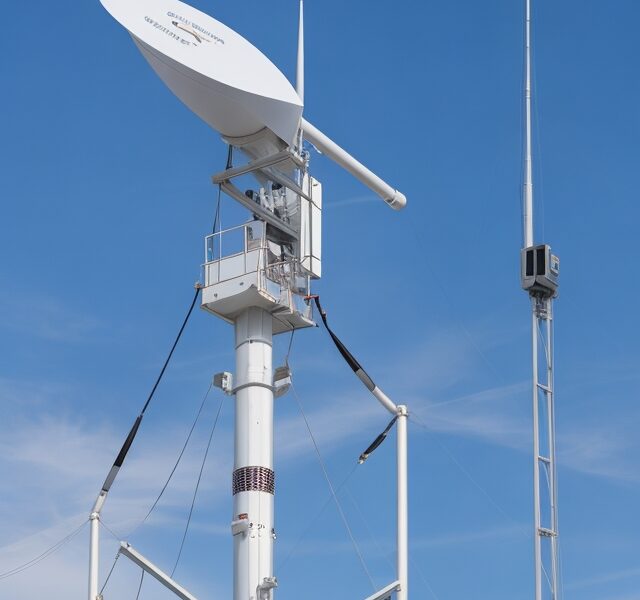CDMA (Code Division Multiple Access) BTS technology is a fundamental component of CDMA-based cellular networks. It enables efficient communication and data transmission between mobile devices and the core network. Here’s a pointwise description of CDMA BTS technology:
- CDMA Network: CDMA is a cellular network technology that allows multiple users to share the same frequency band simultaneously using unique codes. It provides voice and data communication services for mobile devices.
- Base Transceiver Station (BTS): The BTS is a critical element of the CDMA network infrastructure. It consists of radio transceivers, antennas, and associated equipment that facilitate communication with mobile devices within its coverage area.
- Coverage Area: Each BTS has a specific coverage area known as a cell. The size and shape of the coverage area depend on factors such as the BTS’s transmit power, antenna configuration, and environmental conditions.
- Cell Planning: Cell planning involves determining the optimal placement and configuration of BTSs to ensure effective coverage, minimize interference, and maximize network capacity.
- Radio Transceivers: BTSs contain multiple radio transceivers that transmit and receive signals over specific frequency bands. CDMA utilizes spread spectrum techniques to allow multiple users to share the same frequency band simultaneously.
- Spreading Codes: Spreading codes are unique sequences applied to the transmitted signal. They enable CDMA networks to differentiate between users and recover their respective signals at the receiver.
- Frequency Bands: CDMA networks operate in various frequency bands, depending on the specific region and regulatory requirements. Commonly used bands include 800 MHz and 1900 MHz in North America and 450 MHz and 2100 MHz in other parts of the world.
- TRX (Transceiver) Modules: TRX modules are the core building blocks of a BTS. Each TRX module comprises a transmitter, a receiver, and associated components for signal processing and modulation.
- Antennas: BTSs are equipped with antennas for transmitting and receiving signals. These antennas are typically mounted on towers or rooftops to ensure optimal coverage and signal propagation.
- Interface with Core Network: BTSs connect to the core network through interfaces such as the A1 interface, which carries voice and data traffic between the BTS and the Base Station Controller (BSC).
- Base Station Controller (BSC): The BSC is responsible for managing and controlling multiple BTSs. It handles functions such as call setup, handovers between cells, allocation of radio resources, and overall coordination of the network.
- Soft Handoff: CDMA networks support soft handoff, which allows mobile devices to be simultaneously connected to multiple BTSs during a handover process. This ensures seamless call continuity and enhanced coverage.
- Power Control: CDMA employs power control techniques to optimize the transmission power of mobile devices. Power control helps improve signal quality, reduce interference, and extend battery life for mobile devices.
- Signaling and Control: BTSs exchange signaling messages with the BSC and mobile devices to facilitate call setup, termination, and other network-related operations. Various protocols and procedures are used for signaling and control purposes.
- Network Optimization: BTSs play a vital role in network optimization. Techniques such as power control, handover optimization, traffic management, and capacity planning are employed to enhance network performance and efficiency.
- BTS Power Supply: BTSs require a stable and reliable power supply. They are typically connected to the electrical grid but also have backup power systems, such as batteries or generators, to ensure continuous operation during power outages.
- BTS Management and Monitoring: BTSs are remotely managed and monitored to ensure their proper functioning. Network management systems are used to monitor performance, collect statistics, and perform maintenance tasks.
- Security: CDMA BTSs implement security measures to protect the integrity and confidentiality of voice and data traffic. Encryption techniques and authentication protocols are used to prevent unauthorized access and eavesdropping.
- Network Evolution: CDMA technology has evolved over time to support higher data rates and advanced features. Evolutions such as CDMA2000 and EV-DO have brought improvements in terms of data speeds, capacity, and multimedia support.
- Future Developments: Ongoing research and development efforts aim to further enhance CDMA BTS technology. Areas of focus include energy efficiency, network virtualization, and the integration of advanced technologies like 5G and beyond.
In summary, CDMA BTS technology forms the backbone of CDMA-based cellular networks, enabling efficient communication between mobile devices and the core network. BTSs, along with associated components and interfaces, ensure reliable voice and data transmission, soft handoff, power control, network optimization, and ongoing network management and monitoring.
Some more information
CDMA BTS (Base Transceiver Station) technology is a cellular network technology that uses spread spectrum modulation to transmit voice and data between mobile devices and the network. CDMA BTS technology is the foundation of the Code Division Multiple Access (CDMA) cellular network standard, which is a popular alternative to GSM.
CDMA BTS technology consists of a number of components, including:
- Base station controller (BSC): The BSC is the central controller for a group of CDMA BTSs. The BSC is responsible for managing the radio resources in the group of BTSs, and for routing calls between the BTSs and the rest of the CDMA network.
- Base transceiver station (BTS): The BTS is the physical unit that communicates with mobile devices. The BTS contains radio transceivers, amplifiers, filters, and antennas.
- Mobile switching center (MSC): The MSC is the central switching point for a CDMA network. The MSC is responsible for routing calls between different CDMA networks, and for providing services such as call forwarding and voicemail.
CDMA BTS technology works by dividing the service area into a number of cells. Each cell is served by a single BTS. The BTS uses spread spectrum modulation to transmit voice and data between mobile devices and the network. The BSC manages the radio resources in each cell, and routes calls between the BTSs and the rest of the CDMA network. The MSC is the central switching point for the CDMA network. It is responsible for routing calls between different CDMA networks, and for providing services such as call forwarding and voicemail.
CDMA BTS technology has a number of advantages, including:
- High capacity: CDMA BTS technology can support more users per cell than GSM BTS technology. This is because CDMA BTS technology uses spread spectrum modulation, which allows multiple users to share the same radio frequency band without interfering with each other.
- Robustness: CDMA BTS technology is robust and can operate in a variety of environments, including in areas with high levels of interference. This is because CDMA BTS technology uses spread spectrum modulation, which makes it less susceptible to interference than other modulation schemes.
- Efficiency: CDMA BTS technology is efficient in terms of power consumption and spectrum usage. This is because CDMA BTS technology uses spread spectrum modulation, which allows it to transmit more data with less power than other modulation schemes.
- Scalability: CDMA BTS technology is scalable, and can be easily expanded to meet growing demand.
CDMA BTS technology is a mature and reliable technology that has been deployed in over 120 countries and territories. It is a popular alternative to GSM, and it is expected to continue to be used for many years to come.
Here are some additional details about CDMA BTS technology:
- Frequency band: CDMA BTS technology uses the 800 MHz, 1900 MHz, and 2100 MHz frequency bands.
- Data rate: CDMA BTS technology supports data rates up to 1.4 Mbps.
- Security: CDMA BTS technology uses a variety of security features to protect calls and data from unauthorized access.
- Standards: CDMA BTS technology is based on the IS-95 standard, which is an open standard developed by the Telecommunications Industry Association (TIA).
CDMA BTS technology is a vital part of the modern telecommunications infrastructure. It is used to carry voice, data, and video traffic over a wide area. CDMA BTS technology is also used in a variety of other applications, such as machine-to-machine communications and M2M.
The future of CDMA BTS technology is bright. As the demand for mobile data continues to grow, CDMA BTS technology will be used to deliver high-speed broadband to homes and businesses. CDMA BTS technology will also be used to carry data traffic between data centers and cloud computing providers.
CDMA BTS technology is a key technology for the future of telecommunications. It offers high capacity, robustness, efficiency, scalability, and security. As the demand for mobile data continues to grow, CDMA BTS technology will become increasingly important.


